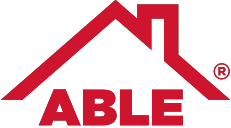Many people don’t realize the importance of the soffit and fascia that run along the rafter tails at the edge of their roof. These crucial elements to the home’s exterior are more than simply decorative elements to complete the look of your home. The fascia is the roofline, or the board that spans the area where the outer walls of the home meet the roof. The soffit is the material that covers the eaves, or the place where the rafters extend beyond the walls of the house. These architectural elements serve to protect your home from a variety of pests. Some of the animals that can invade your home if the soffit is in disrepair or nonexistent include squirrels, birds, and bats. Your home’s attic also needs ventilation. The soffit is designed to allow air to pass through while creating a finished look and preventing animals from entering. It is vital to maintain these features of your home that are often overlooked.
Understanding soffit and fascia materials
Until recent years, fascia and soffit were typically made from wood or aluminum. However, with the rise in popularity of more versatile synthetics and composite materials like vinyl and UPVC, many homeowners are now using these options. These materials are more durable and easy to maintain than more traditional options. They also appeal to homeowners because of their affordability. Vinyl trim used for fascia and vinyl soffit is easy to match to the style of your home, as they come in a wide range of colors and styles to choose from. Some vinyl soffits have a wood grain texture. Others are smooth or beaded, which gives homeowners more variety when they are selecting a style to complement their home. An added benefit to modern soffit and fascia construction materials is that many companies have started producing products that are made from recycled materials. This environmentally friendly option is popular among many modern homeowners.
Ensure proper installation
The way your soffit and fascia are installed is of vital importance because poor installation work can lead to costly problems down the road. If you want to avoid potential issues in the future, you should always have a qualified contractor properly install and waterproof these items. Another way to avoid damage from water and other potentially harmful elements is to have a reputable company install the flashing and rain gutters around the roof of your home. When these jobs are not done correctly, water runoff can get behind siding and leak through unprotected areas that can cause damage, rotting, mold, and mildew problems.
One chore that should always be on a homeowners’ task list is cleaning out the gutters and inspecting for potential issues. It’s not a fun job, but it is an essential one.
Inspecting your fascia and soffit
Many times, storms create problems with a home’s exterior. Heavy winds can cause rain to blow up under the eaves of the home. The soffit performs an essential task in these situations by keeping the rain from getting to the rafters and roof boards. Damaged or poorly maintained soffit can allow water to collect in these areas and lead to more expensive repairs as the water further damages the home.
Many homeowners clean their gutters every spring and fall. This is an excellent time to perform a detailed visual inspection of the soffit and fascia to identify damage from the elements, peeling, and other signs of wear and tear. If you discover any wasp, hornet, or bee nests during your inspection, be sure to remove them or call in an exterminator to complete the job for you. Homeowners also commonly find their soffit and fascia have a bit of mold or mildew forming on the exterior. To remove these substances, simply make a solution of bleach water and clean the surface with a soft brush.
Fascia and soffit repair and replacement
One of the ways that a homeowner can keep up on proper fascia and soffit maintenance is to perform these inspections at least once a year. Ensure that all materials, depending on what they are made of, are sealed, caulked, and painted. When you need to have your soffit and fascia replaced, the cost can vary depending on the size of your home, the construction material you choose, and whether there is additional damage that needs to be repaired. In most cases, replacement usually costs $20-$30 per linear foot for soffit and $15-$25 per linear foot for installation of fascia. The investment is well worth the money, though, when you consider the important role these materials play in protecting your home.
If you need repairs or complete replacement of your fascia and soffit, contact Able Roof at (614) 444-2253 for an estimate today!








